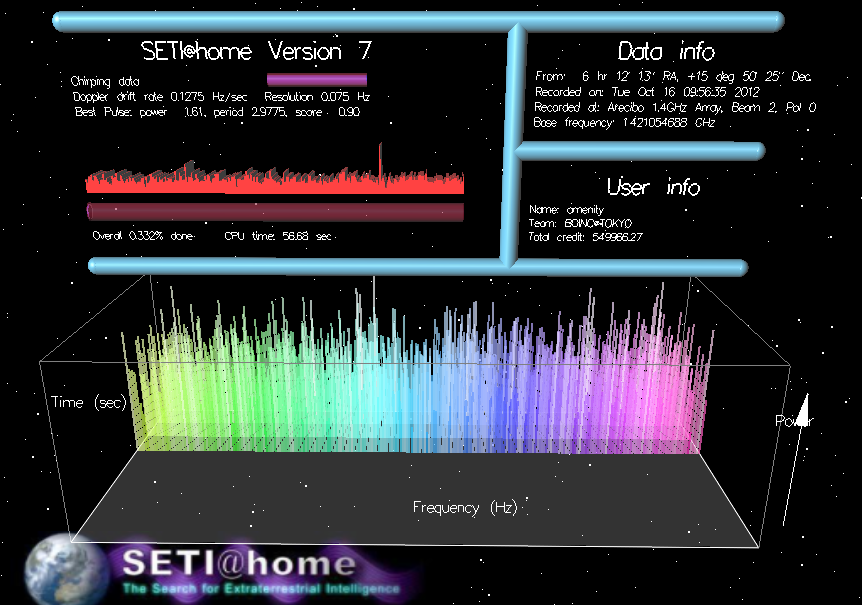

Satellite missions, and is currently Instrument Scientist for the EUV (the gas and dust that lies between the stars) using radio, optical, and In addition to SETI, he studies interstellar matter is based on BOINC, and is an outgrowth of the original (now called Classic'). A new major SETI project based on Project Serendip data and 100,000 personal computers (Sullivan, et al.distributed computing for SETI (Korpela, et al.An Experiment in Public-Resource Computing (Anderson, et al.Statistics of One: What Earth can and can't tell us about life in the universe.New SETI Sky Surveys for Radio Pulses (Siemion, et al.

#SETI BOINC TV#
Radio telescope signals consist primarily of noise (from celestial sources and the receiver's electronics) and man-made signals such as TV stations, radar, and satellites. Such signals are not known to occur naturally, so a detection would provide evidence of extraterrestrial technology. One approach, known as radio SETI, uses radio telescopes to listen for narrow-bandwidth radio signals from space. The science of SETI (Search for Extraterrestrial Intelligence) is a scientific area whose goal is to detect intelligent life outside Earth.


 0 kommentar(er)
0 kommentar(er)
